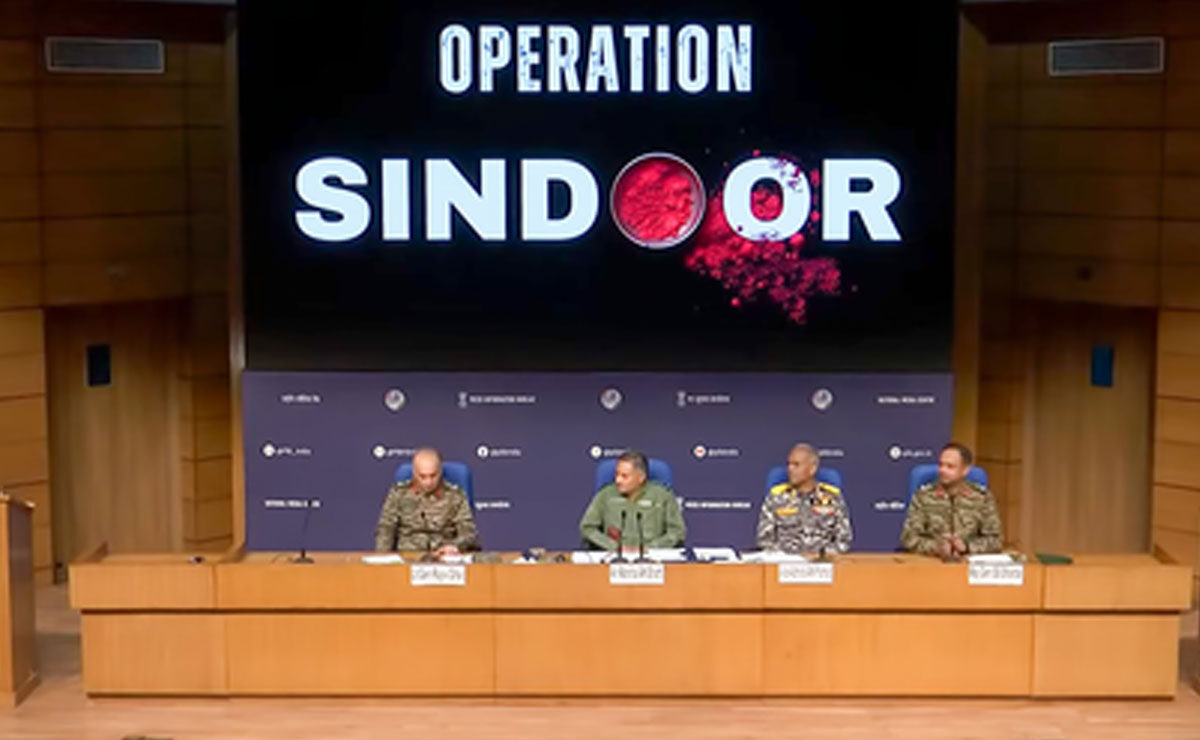Multi-layered counter-drone, air defence grid shield foiled Pak air attacks: DGMO
The Director General of Military Operations (DGMO) on Monday credited India’s impregnable air defence shield—built over the past decade with consistent budgetary and policy support—for successfully thwarting Pakistan’s air attacks during Operation Sindoor.

New Delhi: The Director General of Military Operations (DGMO) on Monday credited India’s impregnable air defence shield—built over the past decade with consistent budgetary and policy support—for successfully thwarting Pakistan’s air attacks during Operation Sindoor.
Table of Contents
Operation Sindoor: A Tactical Success
DGMO Rajiv Ghai revealed that a multi-layered counter-drone and air defence grid was the decisive factor in repelling Pakistani air assaults on the night of May 9 and 10. The system destroyed several Chinese and Turkish-made drones and PL-15 missiles, preventing them from breaching Indian airspace
All Indian Military Bases Operational
Air Marshal A.K. Bharti confirmed that all airbases and military installations remain fully operational and mission-ready. He dismissed reports of damage as misinformation, stating, “Our fight is with the terrorists, not with the Pakistani military or civilians.”
Indian Counterstrikes Hit Strategic Targets
Videos shared during the press briefing showed significant impact zones at Pakistan’s Noor Khan airbase, targeted by Indian airstrikes. The military clarified that only terror hubs were targeted on May 7, but Pakistan escalated the conflict by backing those terror groups.
Role of Armed Forces and Border Security Force
Highlighting the synergy among the three services, DGMO Ghai also praised the Border Security Force (BSF) for actively supporting the armed response. “There has been absolute coordination not only within the forces but with government agencies and the 140 crore citizens of India,” he added.
Stellar Performance of Indian Defence Systems
Air Marshal Bharti lauded both battle-proven legacy systems and modern platforms like the Akash missile system for their effectiveness in neutralizing aerial threats, including Unmanned Combat Aerial Vehicles (UCAVs).
Naval Deterrence in the Arabian Sea
Vice Admiral A.N. Pramod outlined the Indian Navy’s strategic moves in the Arabian Sea, stating that Indian naval pressure deterred Pakistan’s Navy and Air Force from engaging in the region.
High-Level Security Meeting at PM’s Residence
Earlier in the day, Prime Minister Narendra Modi chaired a high-level meeting at his residence with top defence and intelligence officials. Attendees included:
- Defence Minister Rajnath Singh
- External Affairs Minister S. Jaishankar
- National Security Adviser Ajit Doval
- Chief of Defence Staff General Anil Chauhan
- Service Chiefs: General Upendra Dwivedi, Admiral Dinesh K. Tripathi, Air Chief Marshal Amar Preet Singh
- Foreign Secretary Vikram Misri
- Intelligence Bureau Director Tapan Deka
- R&AW Chief Ravi Sinha
Ceasefire Understanding Reached
The meeting followed a mutual understanding between India and Pakistan for a ceasefire, with an agreement for DGMOs of both nations to speak on May 12. The ceasefire request came from Pakistan after suffering massive airstrikes that reportedly destroyed 11 of its airbases.
Would you like this formatted as a printable PDF or posted as a blog article?
